NCERT Exemplar Class 11 Biology Solutions Chapter 5 Morphology of Flowering Plants
If students need to learn the various parts of flowering plants, the NCERT Exemplar Class 11 Biology Solutions Chapter 5 Morphology of Flowering Plants is perfect. It provides knowledge about roots, stems, leaves, fruits, and seeds, including how they can transform or develop. The NCERT Exemplar includes detailed answers to all types of questions, such as MCQs, short, and long answers. A list of important topics and well-labelled diagrams is added to make learning simple.
This Story also Contains
- Access the Morphology of Flowering Plants Class 11 NCERT Exemplar (Multiple Choice Questions)
- Get Answers to NCERT Exemplar Class 11 Biology Chapter 5 (Very Short Answer)
- Find NCERT Exemplar Class 11 Biology Solutions Chapter 5 (Short Answer)
- Detailed Answers to the NCERT Exemplar Class 11 Biology Solutions Chapter 5
- Important Topics of Morphology of Flowering Plants Class 11 NCERT Exemplar
- Approach to Solve NCERT Exemplar Class 11 Biology Chapter 5
- Advantages of NCERT Exemplar Class 11 Biology Chapter 5 Solutions
- Important Questions from Morphology of Flowering Plants Class 11 NCERT Exemplar
- NCERT Exemplar Class 11 Biology Solutions Chapter Wise
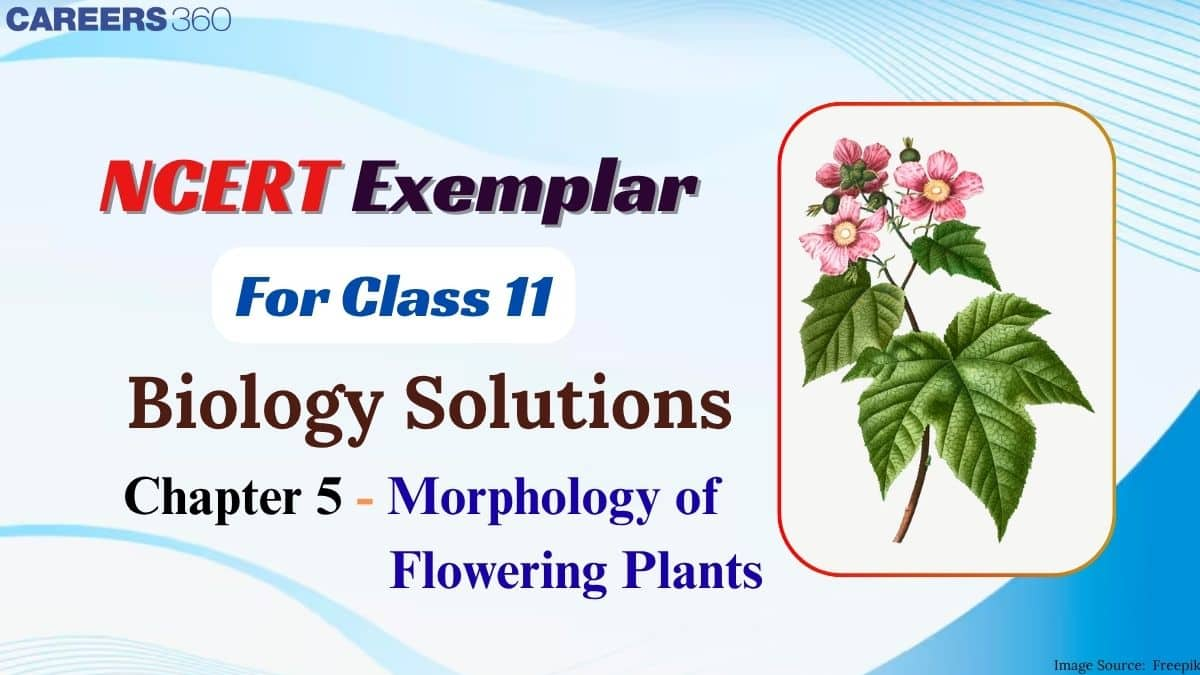
The Morphology of Flowering Plants Class 11 NCERT Exemplar is helpful for students preparing for board exams or competitive examinations like NEET. Utilising these solutions, students will be able to study the external structure and diversity of flowering plants. All the descriptions are simple in the NCERT Exemplar Class 11 Biology Solutions Chapter 5. This gives students an understanding of the plant morphology and boosts confident while taking their exams.
Access the Morphology of Flowering Plants Class 11 NCERT Exemplar (Multiple Choice Questions)
These questions test the quick recall and conceptual clarity. Each question has four options, and students must select the most appropriate one. The NCERT Exemplar Class 11 Biology Chapter 5 helps in checking the application-based understanding of the topic.
Question:1
Answer:
The answer is the option (a) C, B, E, A, D
Explanation: The root cap is at the tip, followed by a zone of meristems. This is followed by the zone of elongation and then the root hair zone. The zone of maturation comes after all of them.
Question:2
Answer:
The answer is option (c), Distal
Explanation: Acropetal succession is an arrangement of flowers in which the youngest flower is at the top of the floral axis.
Question:3
Answer:
The answer is option (a). Endosperm gets used up by the developing embryo during seed development
Explanation: In plants like pea and gram, the endosperm formed after double fertilisation is completely utilised by the developing embryo during seed maturation, so mature seeds are non-endospermic.
Question:4
Answer:
The answer is option (b) Adventitious roots
Explanation: Taproots and fibrous roots come out from the radicles. Nodular roots emerge from root nodules. Whereas adventitious roots generally emerge from the stems and sometimes from the leaves.
Question:5
Answer:
The answer is option (a) Veins and veinlets in a lamina
Explanation: The veins of the leaves, which carry the food and water, are designed in a complex net-like structure. This complex arrangement of veins in a leaf is called venation. Veination is of two types based on the arrangement of veins and veinlets.
Question:6
Answer:
The answer is option (c), Orchids
Explanation: The embryo in the orchid plant absorbs the endosperm during growth.
Question:7
Answer:
The answer is option (d), Fabaceae
Explanation: Leguminosae and pulses are referred to as Fabaceae and are also known as legumes.
Question:8
The placenta is attached to the developing seed near the
(a) Hilum
(b) Testa
(c) Micropyle
(d) Chalaza
Answer:
The answer is option (a) Hilum
Explanation: The hilum is the scar on the seed coat where the seed was attached to the placenta via the funiculus
Question:9
Answer:
The answer is option (c) Indigofera
Explanation: Indigo is a blue colour. Indigofera is used for blue dye.
Question:10
Match the following and choose the correct option
Column I | Column II |
A. Aleurone layer | i. without fertilisation |
B. Parthenocarpic fruit | ii. Nutrition |
C. Ovule | iii. Double fertilisation |
D. Endosperm | iv. Seed |
Options:
a. A-i, B-ii, C-iii, D-iv
b. A-ii, B-i, C-iv, D-iii
c. A-iv, B-ii, C-i, D-iii
d. A-ii, B-iv, C-i, D-iii
Answer: The answer is option (b) 'A- (ii), B-(i), C-(iv), D - (iii)'.
Explanation:
Aleurone layer - a layer of protein storage cells present in cereal maize seed, which is a form of reserved food material.
Parthenocarpic fruit - when the ovary is stimulated to form fruit without fertilisation, then it is a parthenocarpic fruit. For example, seedless grapes and watermelon.
Ovule: contains the embryo sac with the egg cell, synergids, polar nuclei, and antipodal cells. In angiosperms, the pollen tube releases two male gametes, of which one fuses with the egg cell to form the zygote, while the other fuses with polar nuclei to form the triploid PEN (primary endosperm nucleus). The fertilised ovule forms the seed.
Endosperm- PEN develops into endosperm, which provides nutrients to the developing embryo. Endosperm is formed as a result of double fertilisation in angiosperms. It is the product of the primary endosperm nucleus formed due to the fusion of the male gamete and the secondary nucleus (fused polar nuclei).
Get Answers to NCERT Exemplar Class 11 Biology Chapter 5 (Very Short Answer)
These are one-word, one-line, or definition-based questions. They are designed to test precise knowledge and direct recall of important facts and terms from the chapter.
Question:1
Answer:
The plants that grow in marshlands or swamps have vertical growth from their roots. These roots are hollow from within, and thus, they make way for air to enter through these roots. These are known as pneumatophores. In consequence, pneumatophores assist the plants in swamps and marshland areas to acquire oxygen for root respiration.
Question:2
Answer:

Question:3
Answer:
Euphorbia is a large genus of flowering plants, also known as spurge. The stem of Euphorbia is fleshy and cylindrical in structure. The stem in this plant helps to carry out photosynthesis because of the presence of chlorophyll in the stem.
Examples:
Opuntia → flattened green phylloclade (stem).
Euphorbia → cylindrical photosynthetic stem.
Asparagus → cladodes (green branches for photosynthesis).
Question:4
Answer:
Pneumatophores, which help with root respiration.
Question:5
In aquatic plants like Pistia and Eichhornia, leaves and roots are found near _____.
Answer:
In free-floating hydrophytes like Pistia and Eichhornia, leaves and roots are found near the water surface to ensure buoyancy and absorption.
Question:6
Reticulate and parallel venation are characteristic of _____ and _____ respectively.
Answer:
Dicot, monocot.
Question:7
Which parts of ginger and onion are edible?
Answer:
The underground stem in ginger is good for consumption, whereas the altered leaves are edible in the case of onion.
Question:8
In the epigynous flower, the ovary is situated below the _____.
Answer:
Other floral parts
Question:9
Add the missing floral organs of the given floral formula of Fabaceae.
Answer:
C1+2+(2) A (9+1)
Question:10
Name the body part modified for food storage in the following
(a) Carrot
(b) Colocasia
(c) Sweet potato
(d) Asparagus
(e) Radish
(f) Potato
(g) Dahlia
(h) Turmeric
(i) Gladiolus
(j) Ginger
(k) Portulaca
Answer:
(a) Tap Root
(b) Stem
(c) Modified adventitious Roots
(d) Modified root
(e) Tap Root
(f) Stem
(g) Adventitious Roots
(h) Stem
(i) Stem
(j) Stem
(k) Adventitious Roots
Find NCERT Exemplar Class 11 Biology Solutions Chapter 5 (Short Answer)
Some short answers to NCERT Exemplar Class 11 Morphology of Flowering Plants Chapter:
Question:1
Answer:
Adventitious roots are the term used when the roots develop from different plant parts in angiosperms. Two examples of adventitious roots are:
Prop Roots in Banyan: The roots of a banyan tree are an example of prop roots. These prop roots deeply penetrate the soil and help the tree to maintain the balance and support itself.
Stilt Roots in Maize: The roots in maize plants are an example of stilt roots. These roots enter the ground and are developed from the nodes just above the ground; they provide extra support to the maize plant.
Question:2
Answer:
As is known by all, the basic function of roots is that of anchorage and absorption of water and minerals. Availability of water is not an issue for aquatic plants. That is why the roots are not properly grown in most of the aquatic plants. In these free-floating plants, the roots are very few in number and are in a structure of fine hairs. In the plants that are submerged, roots play the important role of anchorage.
Question:3
Draw diagrams of a typical monocot and dicot leave to show their venation pattern.
Answer:
Reticulate Venation
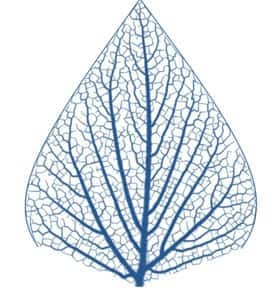
Parallel Venation
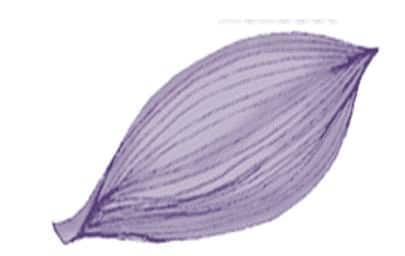
Question:4
Answer:
The arrangement of four floral parts is as follows: starting from the periphery of the flower: Calyx, Corolla, Androecium, and Gynoecium.
The calyx is the part of the flower that is made up of green leaf-like sepals. The corolla is the part of the flower that is composed of colourful petals. The androecium is the part of the flower that consists of stamens (filaments and anthers). The gynoecium is the part of the flower that is composed of the carpel (stigma, style, and ovary).
Question:5
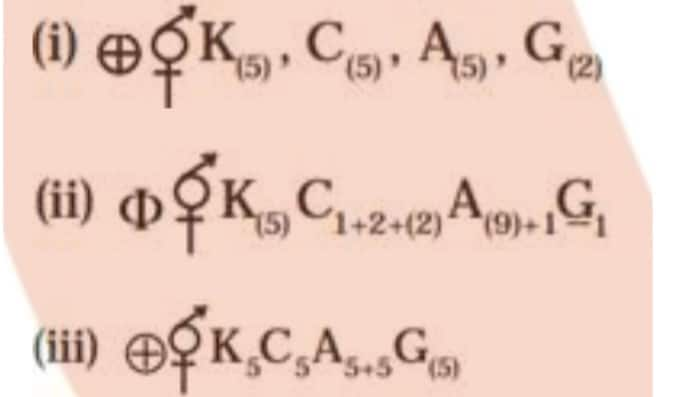
Answer:
(i) 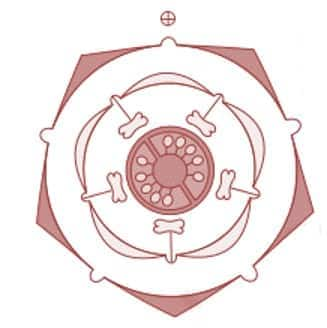
(ii) 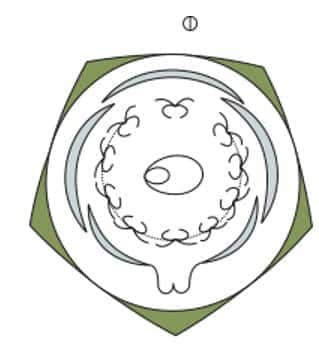
(iii) 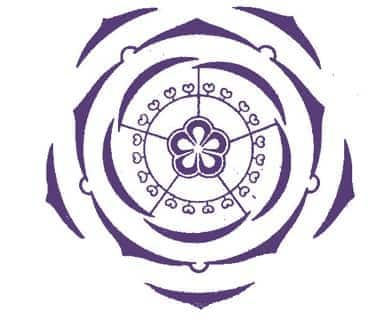
Question:6
These are some examples of exceptions to this generalisation:
Parallel venation in dicot: Calophyllum, Corymbium
Reticulate venation in monocot: Alocasia, Smilax
Question:7
The leaves of the pitcher plant are modified into a pitcher. The pitcher is facilitated with a lid that is developed from the tip of the lamina. The anterior part of the petiole is coiled like a little tendril. It helps to keep the pitcher in a vertical position.
Question:8
Answer:
Coconut water is the free nuclear endosperm, which later becomes the edible white flesh. After some time, this milk becomes flesh as it gets deposited along the walls of the endocarp.
Question:9
How can you differentiate between free central and axial placentation?
Answer:
Placentation: It is regarded as free central when the septa are absent, and the ovules are born on the central axis.
Placentation: It is regarded as axile when the placenta is axial, and the ovules are attached to the placenta in a multilocular ovary.
Question:10
a. Cucumber
b. Peas
c. Pumpkins
d. Grapevine
e. Watermelons
Answer:
a. Cucumber – Stem tendrils
b. Peas – Leaf tendrils
c. Pumpkins – stem tendrils
d. Grapevines – stem tendrils
e. Watermelons – stem tendrils
Question:11
Why is maize grain usually called a fruit and not a seed?
Answer:
The maize grain is generally known as a caryopsis (a fruit) and not a seed, as it is a ripened ovary that contains the ripened ovule.
Question:12
Answer:
Tendrils of pumpkins are homologous to the tendrils of grapevines because both originate from the same part of the plant, i.e., the stem, despite having different functions. But the tendrils of grapevines and the tendrils of pumpkins are analogous to those of a pea because the function of tendrils on pumpkins is to creep, while in grapevines, it is to climb.
Question:13
Answer:
The rhizome of ginger is like the roots of other plants that grow underground. Despite this fact, ginger is a stem and not a root. Ginger is not a root but a stem, as it has internodes and nodes that roots do not possess.
Question:14
a. Bract and Bracteole
b. Pulvinus and petiole
c. Pedicel and peduncle
d. Spike and spadix
e. Stamen and staminoid
f. Pollen and pollenium
Answer:
a. The bracteolate is found between the bract and the flower, while a bract is found towards the base of the pedicle.
b. Petiole is a subcylindrical stalk that connects the lamina with the leaf base, while Pulvinus is a swollen leaf base that is found in leguminous plants.
c. The Peduncle is a stalk of the whole inflorescence, while a pedicle is the stalk of a flower.
d. Spadix is a spike with a fleshy axis, often surrounded by a spathe, while in a spike, sessile flowers are attached to an elongated peduncle.
e. Every stamen represents a male reproductive organ, and the androecium is composed of stamens. The staminode is a sterile stamen.
f. Polonium is a coherent mass of pollen grains (common in orchids, Asclepiads), while pollen is a male gametophyte of angiosperms.
Detailed Answers to the NCERT Exemplar Class 11 Biology Solutions Chapter 5
These questions need detailed answers with proper explanations, diagrams, and examples wherever necessary. The NCERT Exemplar Class 11 Biology Chapter 5 tests the in-depth understanding and presentation of the topic.
Question:1
Answer:
Gynoecium Characteristics | Solanaceae | Liliaceae | Fabaceae | |
Ovules | Many in each locular | Trilocular | Margin in two alternate rows | |
Placentation | Axile | 2-many ovules in each locule | Marginal | |
Ovary | Superior bilocular(2-4 locular in tomato) | Superior | Superior unilocular | |
Carpels | Bicarpellary Syncarpous | Tricarpellary syncarpous | Monocarpellary, free, single | |
Style | Simple | Simple but may be united or separate | Bent, single | |
|
|
|
The economic importance of Fabaceae can be specified as follows: -
Source of pulses
Medicine
Edible oil
Dye
Fibres
Fodder
Ornamental
Question:2
Describe various stem modifications associated with food storage, climbing protection.
Answer:
The various stem modifications that are associated with food storage, climbing, and protection are as follows: -
For storage of food, underground stems of ginger, turmeric, potato, and colocasia are modified. These stems also perform the function of organs of perennation that help get over unfavourable growth conditions.
Developed from axillary buds, stem tendrils are spirally coiled and are slender, which helps the plants to climb. Some examples include grapevines, pumpkins, cucumbers, and watermelons etc.
It is also possible for axillary buds of the stems to be modified into straight, woody, and pointed thorns. Some of the famous examples are Citrus and Bougainvillea. Thorns help to protect the plants from animals.
Question:3
Answer:
Offset | Stolon | Rhizome |
It is a lateral branch that has short intermodes. Each node bears a tuft of roots and a rosette of leaves, which are often found in aquatic plants. For eg: Eichhornia and Pistia | This form of stem is a creeper. Which is in the form of thicker internodes and a long-distance runner with horizontal branches arising from the internodes, For e.g.: - Strawberry | It is an underground stem that grows parallel to the surface of the soil. For e.g., Ginger and Turmeric. |
Question:4
Answer:
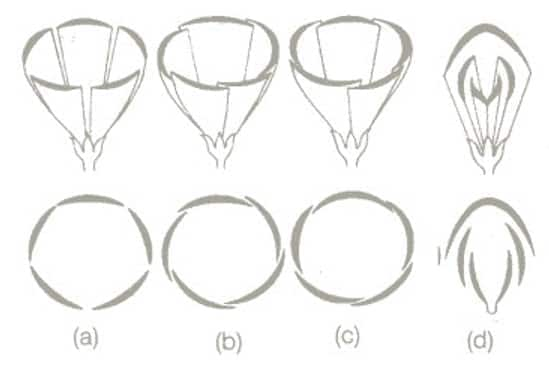
Question:5
Answer:
The placenta is a flattened, soft, pillow-like tissue on which the ovules get attached. The placenta supplies the developing embryo with nutrients.

Question:6
Sunflower is not a flower. Explain.
Answer:
Ans. Sunflower is actually not a flower, but a bunch of flowers, altogether. An inflorescence is the term used for a bunch of exceedingly small flowers, which appear to be a single flower. These flowers are put on a receptacle in a special arrangement. This type of inflorescence of flowers is called a capitulum.
These are some characteristics of capitulum: -
There are many tiny, sessile florets present on the receptacle.
The youngest florets are present at the center, while the oldest florets are at the periphery.
The receptacle is flattened.
There are two kinds of florets in a sunflower, viz., ray florets and disc florets.
Ray florets are present on the rim of the receptacle. These are yellow.
Disc florets are present in the center. They are bisexual in nature and are actinomorphic.
Question:7
Answer:
Epigeal Germination | Hypogeal Germination |
Epigeal germination is described as the type of germination when the hypocotyl grows initially. It then pushes the cotyledons and other parts of the seed out from the soil. | Hypogeal germination is described as the type of germination when the epicotyl grows first, and only the plumule is pushed out from the soil. But the other parts, including the cotyledons, remain under the soil. |
This type of germination takes place in onions, Castor, Mustard, etc. | This type of germination takes place in Monocots and some dicots. |
Question:8
Answer:
Reasons for seed dormancy:
The seed coat is hard, and the impermeable layers of the seeds prevent uptake of water, which inhibits growth and delays the process of germination. In some cases, the seeds have undeveloped embryos, which is the reason for the delay in germination.
Methods to break seed dormancy:
Seed dormancy can be broken by changes in the temperature of the environment and other conditions. Physical dormancy can also be broken when the seed goes through the gut of an animal that has consumed it. Mechanical dormancy is broken with the help of some external factors. Example: An animal might break the hard coat of the seed.
Also, read the NCERT solutions subject-wise
Important Topics of Morphology of Flowering Plants Class 11 NCERT Exemplar
Some major subtopics of the morphology of flowering plants. All the questions given in the NCERT Exemplar Class 11 Biology Chapter 5 are based on these topics.
Types of Roots – Taproot, Fibrous Root, Adventitious Root
Root Modifications – Storage, Breathing, Climbing Roots
Structure and Modifications of Stem – Underground, Aerial, and Subaerial
Types of Leaves – Simple and Compound Leaves
Venation – Parallel and Reticulate
Phyllotaxy – Alternate, Opposite, and Whorled
Types of Inflorescence – Racemose and Cymose
Floral Formula and Floral Diagram
Structure and Types of Fruits – Dry, Fleshy, and Aggregate Fruits
Monocot and Dicot Seed Structure
Important Plant Families – Fabaceae, Solanaceae, Liliaceae
NCERT Exemplar Class 11 Solutions
Approach to Solve NCERT Exemplar Class 11 Biology Chapter 5
Begin by carefully reading the chapter to get the exterior features and structural range of flowering plants. Given below are a few tips that students can follow:
Be attentive to the vocabulary, kinds, and adaptations of plant organs, and their survival value in the different environments.
Observe the floral structure in detail, the pattern and role of calyx, corolla, androecium, and gynoecium.
Practice every kind of question given in the NCERT Exemplar Class 11 Biology Solutions Chapter 5.
Revise by taking notes, making flowcharts, and tables for classification.
Regular practice of previous years' questions is important to improve exam performance.
Also, check the NCERT Books and NCERT Syllabus here
Advantages of NCERT Exemplar Class 11 Biology Chapter 5 Solutions
Solving the exemplar problems after studying the chapter offers several advantages to students, some of which are mentioned below. Morphology of Flowering Plants is an important chapter that introduces the interesting world of plants.
- NCERT Exemplar Class 11 Biology Chapter 5 Solutions provides detailed explanations about plant morphology, making difficult topics easier to understand.
- Different types of questions, such as MCQs, short and long answers, are included so that students will understand how to write answers in the exam.
- These solutions are important for NEET and board exams, in which questions on floral diagrams and modifications are commonly asked.
- Students will be able to connect the theoretical concepts with the practical applications, which improves accuracy and retention power.
- The exemplar problems also allow them to learn how to write answers in the correct format in the exams, which improves scores.
Important Questions from Morphology of Flowering Plants Class 11 NCERT Exemplar
Given below are some of the important questions from the chapter Morphology of Flowering Plants. To perform well in exams, it is important to solve different types of questions. For this purpose, students can use the NCERT Exemplar Class 11 Biology Solutions Chapter 5.
Question 1: Roots that develop from parts of the plant other than the radicle are called:
Option 1. Taproots
Option 2. Fibrous roots
Option 3. Adventitious roots
Option 4. Lateral roots
Answer:
Adventitious roots are roots that arise from any part of the plant other than the radicle (the embryonic root). They may develop from stems, leaves, or old woody roots, and are common in many monocots and some dicots. These roots help in vegetative propagation and provide extra support to the plant. In contrast, taproots develop directly from the radicle, fibrous roots are a mass of similarly sized roots (common in grasses), and lateral roots branch off from the main root. Thus, adventitious roots are unique in their origin from non-radicle plant parts.
Hence, the answer is option (3) Adventitious roots
Question 2. The placenta is attached to the developing seed near the
Option 1. Hilum
Option 2. Testa
Option 3. Micropyle
Option 4. Chalaza
Answer :
The scar on the seed coat through which the seed attaches itself to the fruit is known as the Hilum. Chalaza is the base of the ovule, Testa is the outer covering of the seed, and lastly, micropyle is a tiny opening in the seed coat through which water gets absorbed into the seed.
Hence, the answer is option (1) Hilum
Question 3. Endosperm, a product of double fertilisation in angiosperms, is absent in the seeds of
Option 1. Coconut
Option 2. Maize
Option 3. Orchids
Option 4. Castor
Answer :
The endosperm may be completely consumed by the developing embryo (e.g., pea, groundnut, beans) before seed maturation. Such seeds are called non-endospermic or exalbuminous. It may persist in the mature seed (e.g., castor and coconut) and be used up during seed germination. Such seeds are called endospermic or albuminous. The embryo in the orchid plant absorbs the endosperm during growth.
Hence, the answer is option (3) Orchids
Must Read NCERT Notes subject-wise
NCERT Exemplar Class 11 Biology Solutions Chapter Wise
The chapter-wise links are given below:
Frequently Asked Questions (FAQs)
NCERT Exemplar provides conceptual questions, diagrams, and exercises to strengthen understanding. It enhances analytical thinking by including application-based and higher-order questions, helping students grasp the structural adaptations and modifications of plants effectively.
This chapter covers the morphology of flowering plants, including root, stem, leaf, inflorescence, flower, fruit, and seed. It also discusses modifications, venation, phyllotaxy, placentation, and floral formulae for plant classification.
Root modifications include taproot modifications (e.g., carrot for storage), adventitious roots (e.g., prop roots in banyan for support), and respiratory roots (e.g., pneumatophores in mangroves for gaseous exchange). These adaptations help plants survive in varied environments.
The NCERT Exemplar Class 11 Biology Solutions Chapter 5 Morphology of Flowering Plants covers the external features and structure of flowering plants, including roots, stems, leaves (types, venation, phyllotaxy), inflorescence, flowers (parts and whorls), fruits, seeds, floral formulae, and the description of important plant families like Fabaceae, Solanaceae, and Liliaceae.
Floral formulae and diagrams use symbols and numbers to represent the structure, symmetry, sex, and arrangement of floral organs. They help in the systematic identification and classification of plant families. All diagrams are included in the NCERT Exemplar Class 11 Biology Solutions Chapter 5 Morphology of Flowering Plants.
The correct sequence from the tip upwards is: Root cap zone, Zone of meristems, Zone of elongation, Root hair zone, and Zone of maturation.
Morphology forms the foundation for understanding plant diversity and classification. It is a key topic in board exams and competitive exams like NEET, as questions often test the ability to identify, describe, and compare plant structures and adaptations.
- Roots: Storage (carrot), breathing (pneumatophores in mangroves), climbing (ivy)
- Stems: Food storage (potato tuber), support (tendrils in grapes), protection (thorns in Bougainvillea), vegetative propagation (runners in strawberry)
- Leaves: Spines (cactus), tendrils (pea), storage (onion bulb)
Popular Questions
Courses After 12th
Applications for Admissions are open.
As per latest syllabus. Physics formulas, equations, & laws of class 11 & 12th chapters
JEE Main Important Chemistry formulas
Get nowAs per latest syllabus. Chemistry formulas, equations, & laws of class 11 & 12th chapters
JEE Main high scoring chapters and topics
Get nowAs per latest 2024 syllabus. Study 40% syllabus and score upto 100% marks in JEE
JEE Main Important Mathematics Formulas
Get nowAs per latest syllabus. Maths formulas, equations, & theorems of class 11 & 12th chapters




